Abstract
A stereoselective total synthesis of chiral juvenile hormone I is described that allows stoichiometric introduction of two tritium atoms in the final step. Both optical antipodes of the pivotal epoxy alcohol intermediate were prepared in 95% enantiomeric excess by the Sharpless epoxidation of a (Z)-allylic alcohol. Elaboration of the hydroxy-methyl group to a vinyl group followed by selective homogeneous tritiation affords optically active juvenile hormone I analogs at 58 Ci/mmol. Competitive binding of the labeled 10R, 11S and 10S,11R enantiomers with unlabeled enantiomers to the hemolymph binding protein of Manduca sexta larvae was determined by using a dextran-coated charcoal assay. The natural 10R,11S enantiomer has twice the relative binding affinity of the 10S,11R enantiomer. The availability of such high specific activity optically pure hormones will contribute substantially to the search for high-affinity receptors for juvenile hormones in the nuclei of cells. Moreover, the chiral 12-hydroxy-(10R,11S)-epoxy intermediate allows modification of juvenile hormone for solid-phase biochemical and radioimmunochemical work without altering either the biologically important carbomethoxy or epoxy recognition sites.
Full text
PDF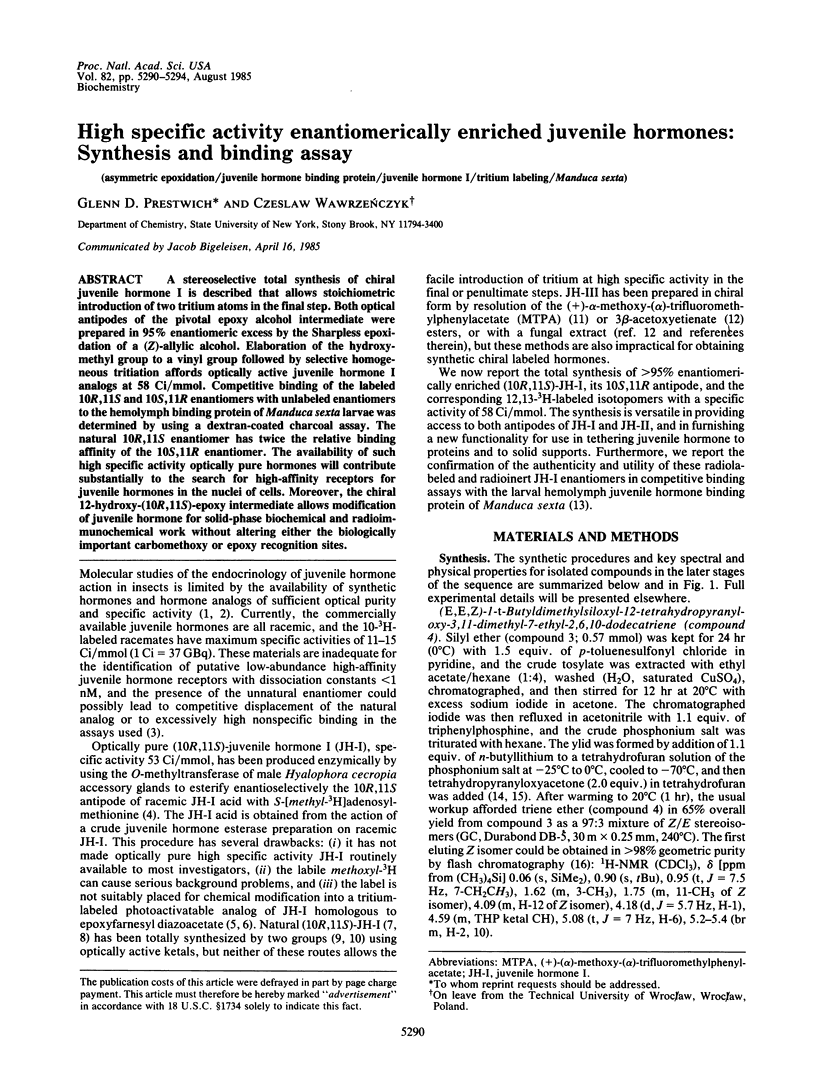
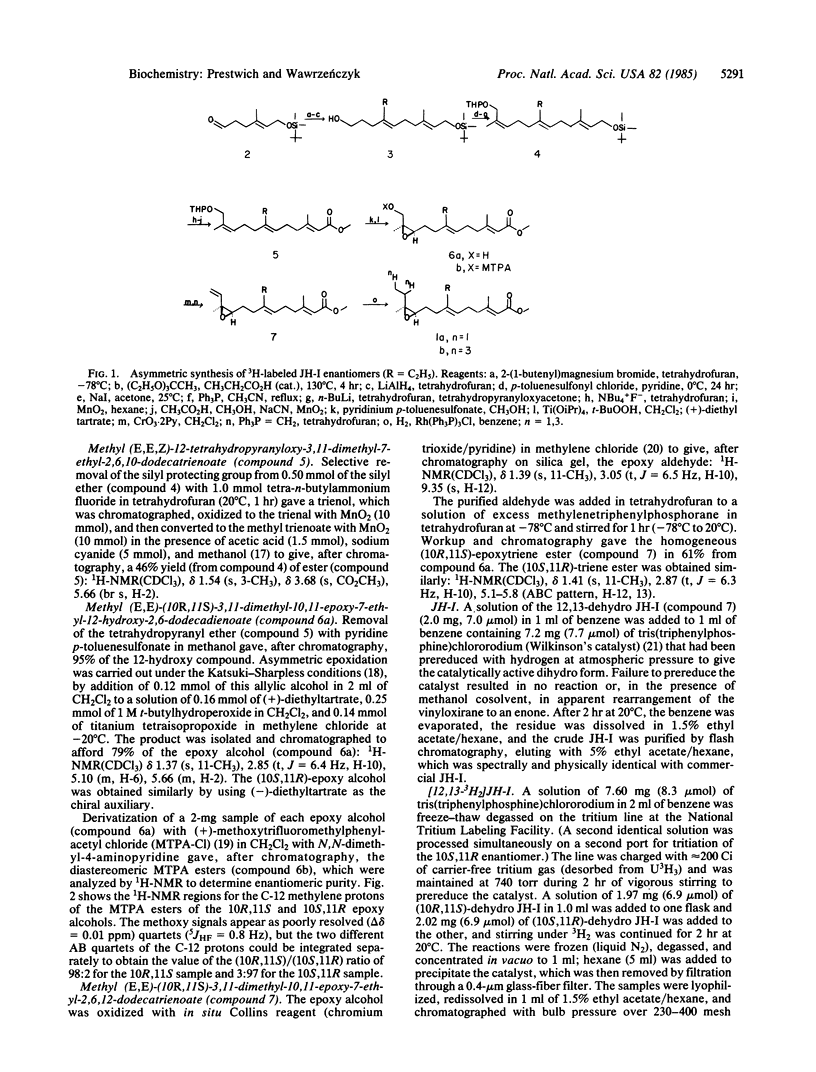
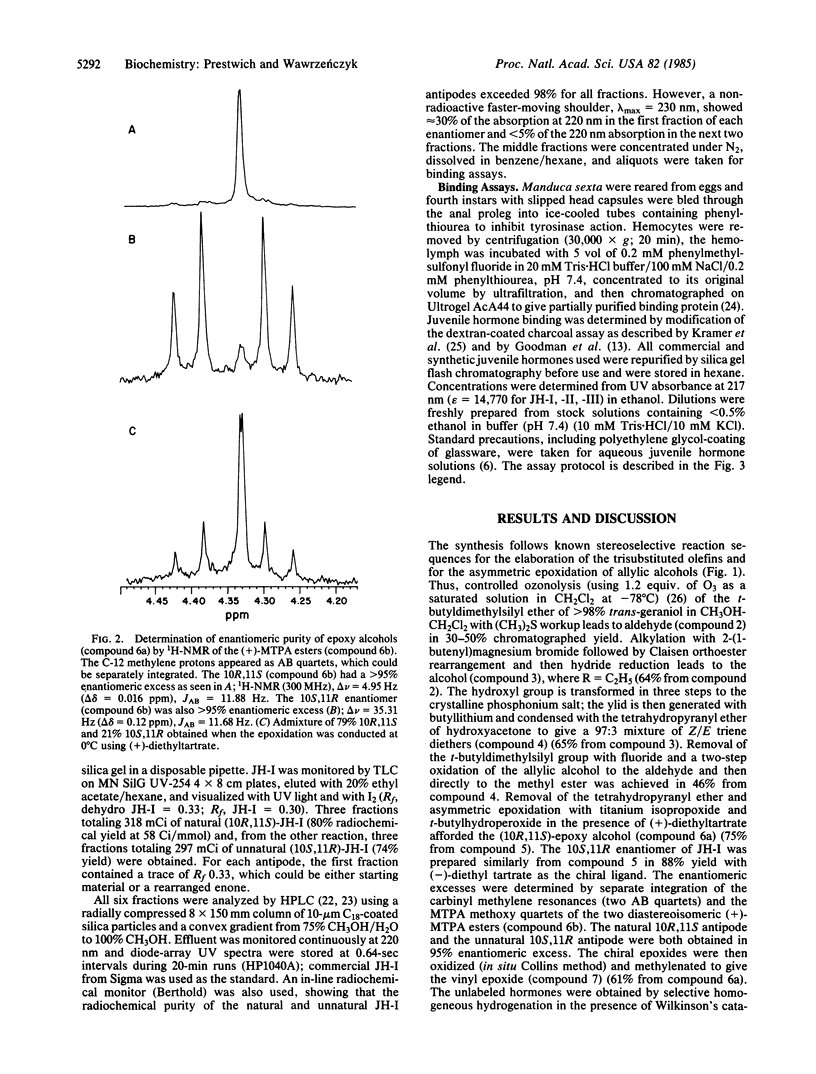
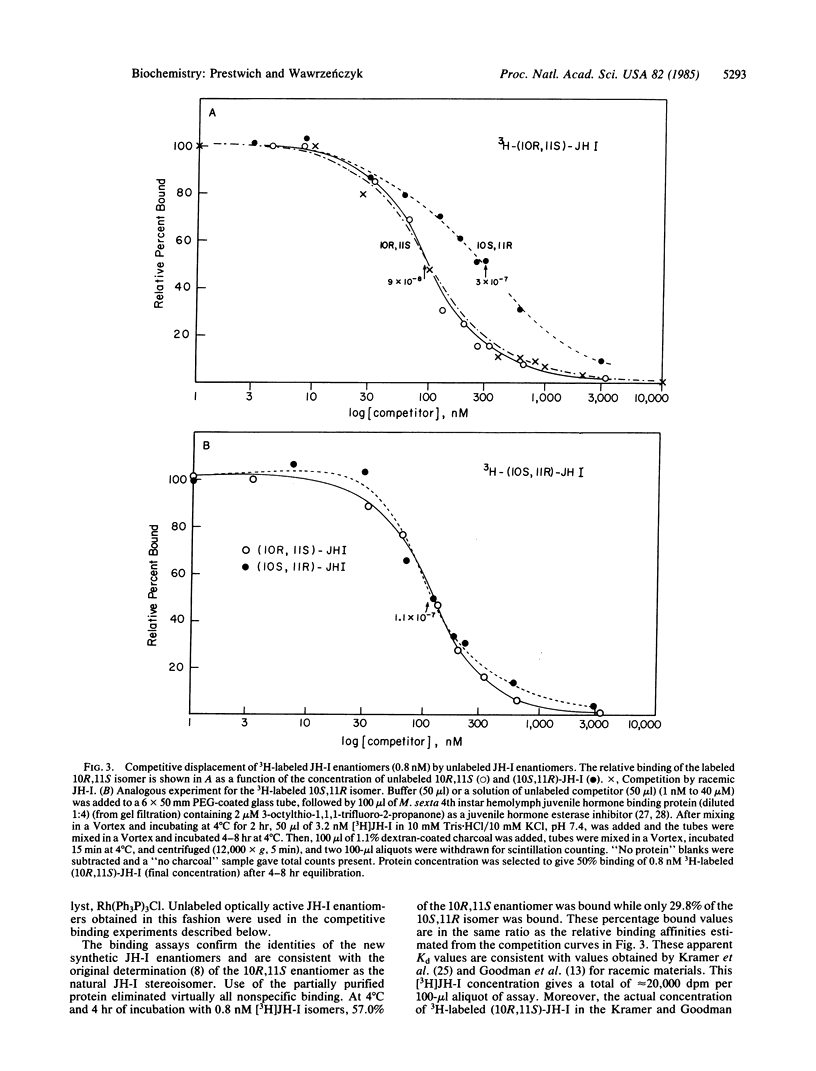
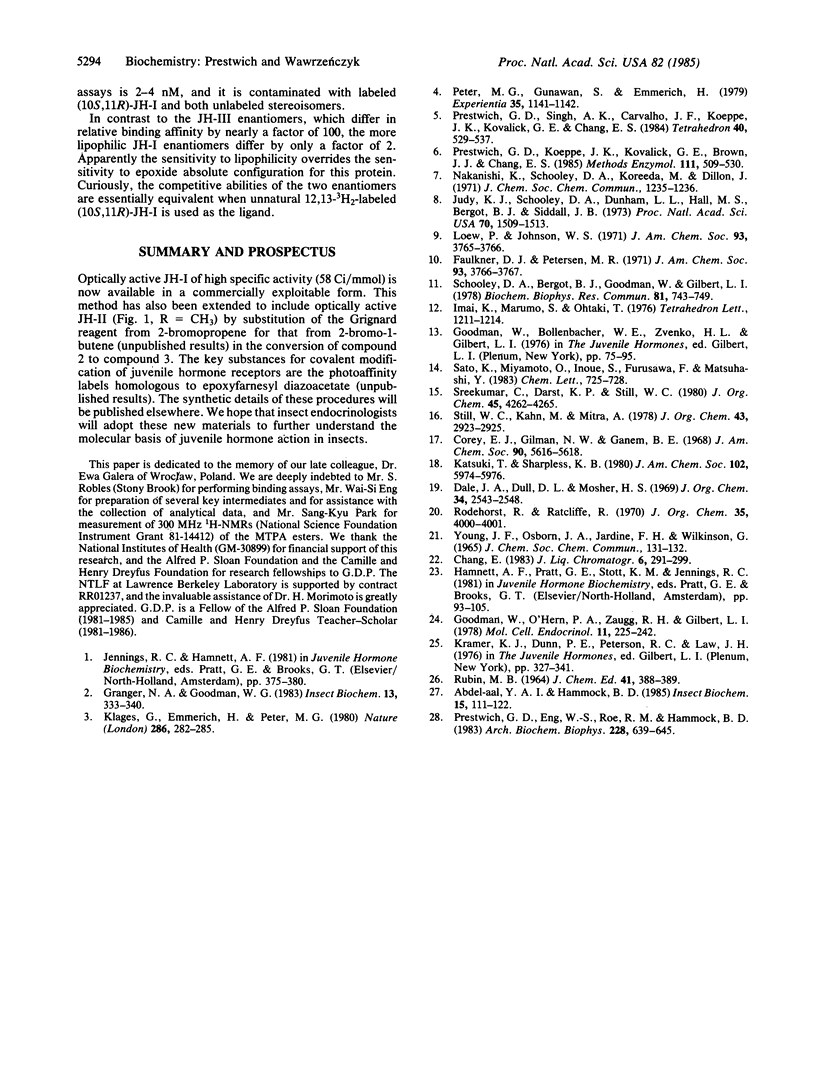
Selected References
These references are in PubMed. This may not be the complete list of references from this article.
- Faulkner D. J., Petersen M. R. Synthesis of C-18 Cecropia juvenile hormone to obtain optically active forms of known absolute configuration. J Am Chem Soc. 1971 Jul 28;93(15):3766–3767. doi: 10.1021/ja00744a035. [DOI] [PubMed] [Google Scholar]
- Goodman W., O'Hern P. A., Zaugg R. H., Gilbert L. I. Purification and characterization of a juvenile hormone binding protein from the hemolymph of the fourth instar tobacco hornworm, Manduca sexta. Mol Cell Endocrinol. 1978 Jul-Aug;11(2):225–242. doi: 10.1016/0303-7207(78)90010-2. [DOI] [PubMed] [Google Scholar]
- Judy K. J., Schooley D. A., Dunham L. L., Hall M. S., Bergot B. J., Siddall J. B. Isolation, Structure, and Absolute Configuration of a New Natural Insect Juvenile Hormone from Manduca sexta. Proc Natl Acad Sci U S A. 1973 May;70(5):1509–1513. doi: 10.1073/pnas.70.5.1509. [DOI] [PMC free article] [PubMed] [Google Scholar]
- Loew P., Johnson W. S. The synthesis of the optically active form of the C-18 Cecropia juvenile hormone. J Am Chem Soc. 1971 Jul 28;93(15):3765–3766. doi: 10.1021/ja00744a034. [DOI] [PubMed] [Google Scholar]
- Prestwich G. D., Eng W. S., Roe R. M., Hammock B. D. Synthesis and bioassay of isoprenoid 3-alkylthio-1,1,1-trifluoro-2-propanones: potent, selective inhibitors of juvenile hormone esterase. Arch Biochem Biophys. 1984 Feb 1;228(2):639–645. doi: 10.1016/0003-9861(84)90033-x. [DOI] [PubMed] [Google Scholar]
- Prestwich G. D., Koeppe J. K., Kovalick G. E., Brown J. J., Chang E. S., Singh A. K. Experimental techniques for photoaffinity labeling of juvenile hormone binding proteins of insects with epoxyfarnesyl diazoacetate. Methods Enzymol. 1985;111:509–530. doi: 10.1016/s0076-6879(85)11036-0. [DOI] [PubMed] [Google Scholar]
- Schooley D. A., Bergot B. J. Synthesis of both optical isomers of insect juvenile hormone III and their affinity for the juvenile hormone-specific binding protein of Manduca sexta. Biochem Biophys Res Commun. 1978 Apr 14;81(3):743–743. doi: 10.1016/0006-291x(78)91414-6. [DOI] [PubMed] [Google Scholar]


